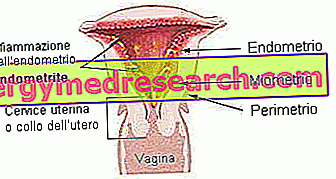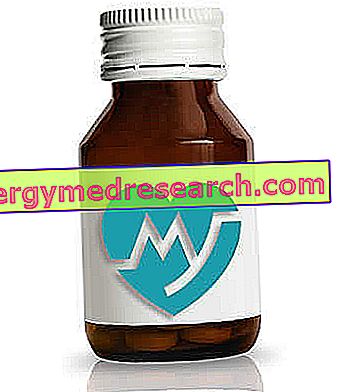Definition
The term "jaundice" refers to a yellowish colouration of skin, mucous membranes and ocular scleras, a consequence of the accumulation of bilirubin in the blood; not by chance, jaundice is also known as hyperbilirubinemia.
Jaundice is visible when the rate of bilirubin in the blood is between 1.5 and 2.5 mg / dl (sub-jaundice); when these values exceed 2.5 mg / ml, jaundice is clearly evident.
Classification and Causes
- Obstructive jaundice: the urine is darker, the faeces are lighter. Cause: some medications, liver cirrhosis, hepatitis
- Hepatocellular jaundice: indirect increase of bilirubin in the blood. Causes: intake of some drugs, Gilbert's syndrome, Crigler-Najjar syndrome.
- Hemolytic jaundice: urine and faeces maintain their color. Causes: hemolytic / pernicious anemia, hyperactivity of the spleen, leukemia, autoimmune diseases, thalassemia.
- Neonatal jaundice: yellowish skin on the face and other parts of the body. Causes: increased synthesis of indirect bilirubin, inactivity of liver enzymes (implicated in the metabolism of bilirubin)
- Gravidar jaundice: bilirubin accumulates in the gall bladder. Causes: hepatopathies, hypersensitivity of the biliary tract to hormonal increase in the blood
Risk factors for jaundice: gall bladder stones, pancreatic / liver cancer, mononucleosis, favism.
Symptoms
Jaundice essentially manifests itself with a yellowish color at the level of sclera, skin and mucous membranes; the change in color is the immediate reflection of an exaggerated increase in bilirubin in the blood, which tends to accumulate locally.
Diet
Information on the Icterus - Drugs for the Treatment of Enttero are not intended to replace the direct relationship between health professional and patient. Always consult your doctor and / or specialist before taking Jaundice - Drugs for the Treatment of Enttero.
drugs
If the neonatal jaundice is considered a pseudo-physiological and reversible form after a few days after birth, the jaundice that occurs during adulthood is instead more alarming and a lit sign of ongoing pathology. Accordingly, newborns experiencing jaundice are generally not subjected to any treatment; only in some cases, young patients are exposed to phototherapy.
Only in rare circumstances, neonatal jaundice is considered pathological; for example, when it appears from the first day of life, when the concentration of direct bilirubin exceeds the value of 1.5-2 mg / dl or when the condition persists for over two weeks. In problematic cases, it is possible to administer intravenous doses of albumin, useful for preventing the deposit of bilirubin in the tissues and, sometimes, phenobarbital.
Jaundice occurring during adulthood is more problematic; before intervening with drugs, it is recommended to undergo all the necessary tests to isolate the root cause; after identifying the etiological element, it is possible to proceed with the therapy.
- Phenobarbital (eg Luminale, Gardenale, Fenoba FN): the drug belongs to the class of anticonvulsants and is also used for the treatment of pathological jaundice in infants and children under the age of 12 years. As an indication, it is advisable to take a dose of drug equal to 3-8 mg / kg per day, possibly divided into 2-3 doses. Do not exceed 12 mg / kg per day. Consult your doctor.
- Albumin (eg. Album.Um.Immuno, Albutein, Albital): available in solution to be injected intravenously, albumin is used in therapy for the treatment of jaundice, especially for the neonatal one. The drug is indicated to hinder the accumulation of bilirubin in tissues. The dosage and duration of treatment are exclusively medical.
Drugs used in therapy to treat gall bladder jaundice:
- Chenodeoxycholic acid: it is the most important bile acid produced by the liver. The active ingredient is used in therapy to help dissolve gall bladder stones, even in the context of jaundice; the treatment with this drug is able to dissolve, partially or totally, the gall bladder stones (consisting of cholesterol), thus resolving the jaundice dependent on gallbladder stones. Consult your doctor for dosage and method of administration.
- Ursodeoxycholic acid or ursodiol (eg Ursobil HT, Ursodes AGE acid, Litursol): the administration of these drugs has been particularly indicated for the dissolution of gall bladder cholesterol stones, also in the context of jaundice. The recommended dosage is the following: 8-12 mg / kg per os per day, in a single dose, in the evening or in two divided doses; prolong the therapy up to two years (maintenance therapy: 250 mg a day). Respect for the drug's use is essential for healing the disease (calculations) and for canceling side effects (in this case, jaundice). Consult your doctor.
Drugs used in therapy for the treatment of jaundice dependent on mononucleosis:
- Aciclovir (eg. Acyclovir, Xerese, Zovirax): in some cases of mononucleosis, possibly associated with jaundice, the doctor prescribes this substance, the drug of choice for the treatment of Herpes simplex.
- Ibuprofen (eg. Brufen, Moment, Subitene) the drug is an anti-inflammatory / analgesic (NSAID): it is recommended to take from 200 to 400 mg of active ingredient (tablets, effervescent sachets) every 4-6 hours, as needed. In some cases, the analgesic can also be administered via the IV (400 to 800 mg every 6 hours, as needed)
It is clear that in this case jaundice is simply a secondary sign of the disease, therefore the patient must first be treated with drugs designed for the most serious disease (mononucleosis), which will gradually lead to the cancellation of all accompanying symptoms, just like jaundice.
For further information: see the article on drugs for the treatment of mononucleosis.
Note:
- Patients with favism and jaundice must refrain from ingesting broad beans, peas and drugs that can trigger the disease (NSAIDs, antipyretics, sulfonamides, analgesics, some antibiotics, etc.).
- Pancreatic and liver cancer patients, as we have seen, can also be affected by jaundice: tumors, difficult to cure, can be treated with antineoplastic drugs (eg Gemcitabine, Docetaxel, Mitomycin for pancreatic cancer treatment and Sorafenib for liver cancer). The possible resolution of the neoplasm will also lead to the disappearance of jaundice.
- When jaundice depends on cirrhosis, it is recommended to avoid alcohol; if necessary, it is possible to use some drugs, if cirrhosis was caused by bacterial infections (Amoxicillin is particularly indicated). When cirrhosis, accompanied by jaundice, degenerates into hepatic encephalopathy, it is possible to take Lactulose.
For further information: see the article on drugs for the treatment of cirrhosis.



